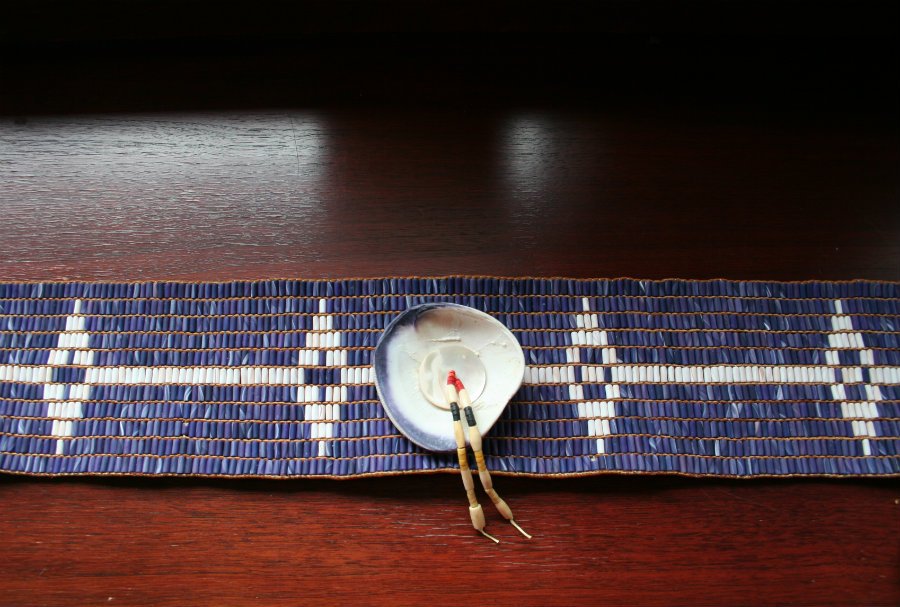About Rama

The Chippewas of Rama First Nation has developed substantially over the years. Community facilities include the newly opened Mnoyaawgamig, the House of Well Being which is home to Wewena Minodoodaadawin, our Health and Social Services departments; Dnaagdawenmag Binnoojiiyag Child & Family Services (DBCFS); and a number of retaillers. This facility brings our health and social services together and fulfills a long-held community vision.
Facilities include the Getsidjig Endaawaad Seniors Community Home and Extended Care Facility, the Community Hall, Early Childhood Education Centre, the Emergency Services hub where Police, Fire and Paramedic Services are located, the Rama Veterans Ballfield, the Mnjikaning Arena Sports Ki (MASK) with an Olympic-sized ice rink, gymnasium, and exercise facility. The MASK is adjacent to the community library, computer laboratory and Mnjikaning Kendaaswin Elementary School.
We have also developed and maintain the Black River Wilderness Park which is used for functions and wilderness camping, the Ojibway Bay Marina, Rama Country Market, Shell Station, shops within the Casino Rama complex, and a strip mall which houses Scotiabank, Ben’s Pharmacy, a legal office and our Government Administration offices. Rama hosts a Subway franchise and owns a Tim Horton franchise located at the Rama Country Market and Shell Gas Station.
Rama First Nation is known for our musicians, artists, and sports figures. In the 1920’s, the Silver Nightingale Brass Band, with many members from Rama First Nation, was a popular touring band. In the 1970’s and 80’s, the late Arthur Shilling was a celebrated Canadian artist. His paintings are on permanent display at his home in Rama as well as public and private collections throughout the country. His sons, Travis and Bewabon, have now established themselves as notable artists. The newly developed Powwow logo, introduced in 2015, is the work of Ontario College of Art and Design (OCAD) graduate Nancy King. Many of our young musicians offer performances at community jams and celebrations taking place throughout Rama.
We are known as the ‘people of the deer’ and this can be observed in our community flag and logo. Rama First Nation is the host community for Casino Rama, an economic engine in the area, offering employment, business opportunities, entertainment and generating significant tourism for Ontario’s Lake Country.
The Chippewas of Rama First Nation have continued to honour our ancestors by keeping the traditions which have made our people a strong and resilient community. Rama’s annual Powwow draws thousands of people each year and is held in the John Snake Memorial Multi-Purpose Grounds on Rama Road. Our Culture and Research Department was established in 2002 to support Cultural preservation, promotion and education in our community. Ojibwe language classes are available from Early Childhood Education through to Grade 8 in our programming. Traditions are passed from generation to generation to ensure that the Ojibwe spirit continues in our people.
In our 2015 Ten Year Community Visioning process, the restoration of Traditional Ecological Knowledge was identified as a key priority in the community. These priorities were also highlighted by the community:
- Developing a new Health and Social Services building committed to promoting mental, physical, spiritual and emotional well-being of our people. Services would include both traditional and western medicine (now under construction and slated for a 2021 opening.)
- Researching, writing and publishing of Rama’s history to preserve our Ojibwe language and dialect, our culture, traditions and history.
- Eco-Tourism including Black River Wilderness Park as a multi-use, year round destination that is also a place for our children to learn about culture, to be the basis of a global indigenous university in the future as well as a place to practice our land skills.
- Economic Development to ensure diverse investments and projects to sustain our community well into the future.
The Chippewas of Rama First Nation were originally part of a larger community known as the Chippewas of Lake Simcoe and Lake Huron of which Chief William Yellowhead (or Musquakie) was recognized as principal chief. As hunter-gatherers, our traditional lifestyle involved following deer herd movements in the autumn and winter months to the West, East, and North points of Ontario. Summer months were spent in settlements at places now known as Atherley, Orillia and Coldwater.
In the 1830’s, on behalf of the Crown, Lieutenant-Governor Sir John Colborne set aside a clearing of approximately 10,000 acres for our nation between the Narrows (where Lake Couchiching and Lake Simcoe meet) and Coldwater. The government tried to gather our people together to make them farmers. This was also the beginning of the reserve system which continues today.
During their settlement in the area, our ancestors were successful in establishing the foundations for their communities, building the Coldwater Grist Mill, which still stands in the town of Coldwater, and clearing the way for the route now known as Ontario Highway No. 12. In 1836, the Chiefs signed a document that they understood would provide title to the land but was actually a surrender which gave up the reserve lands.
At that point, what was a large nation of 3 communities, was separated. Chief Aisance and his band moved to Christian Island; Chief Snake and his band eventually located in Georgina Island; and Chief Yellowhead and his band stayed in this area and are now known as the Chippewas of Rama First Nation. These three First Nations, together known as the Chippewa Tri-Council, still enjoy a strong relationship today. In 2012, the Chippewa Tri-Council settled a claim with the federal government for the Coldwater Narrows Land. It was largest specific claims settlement in Canadian history at that time.


